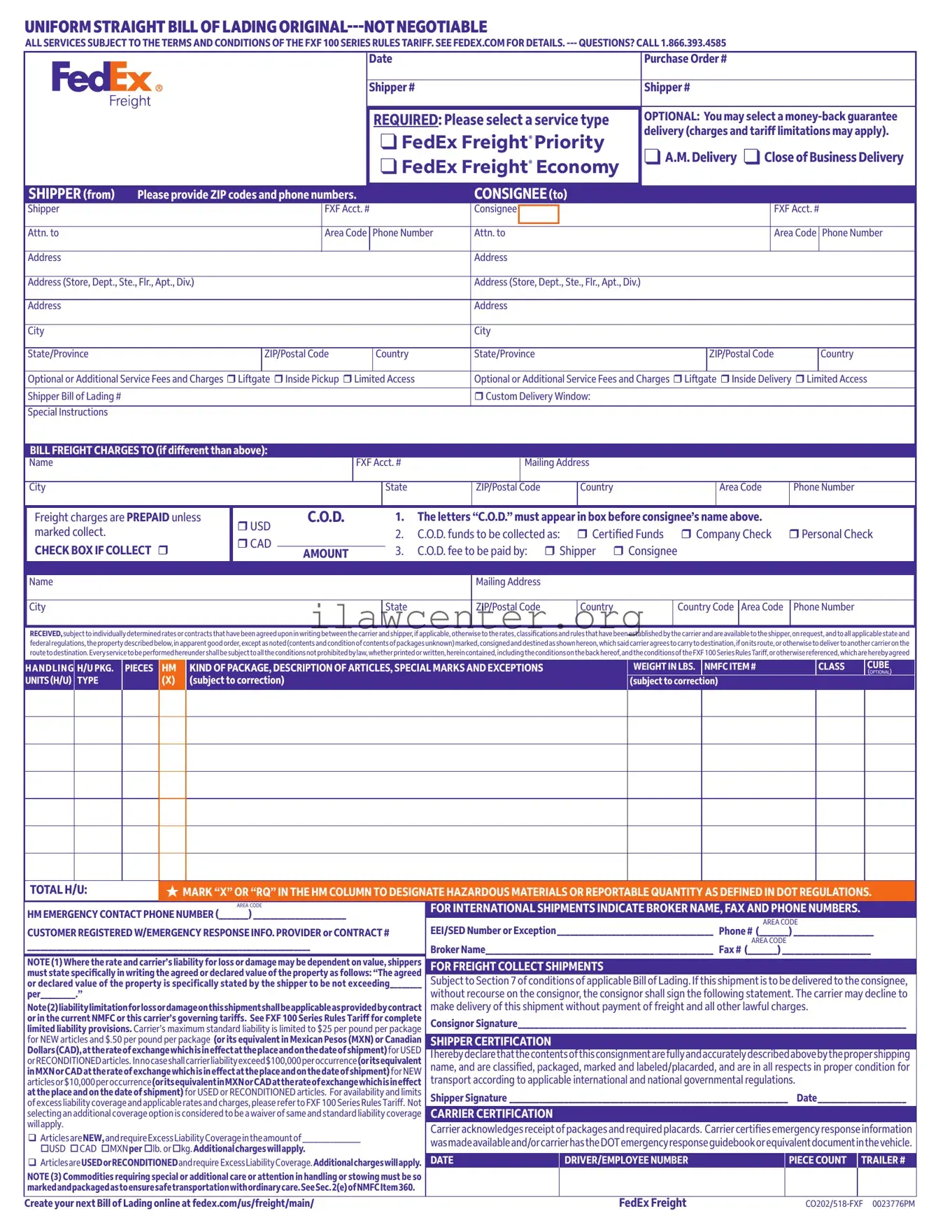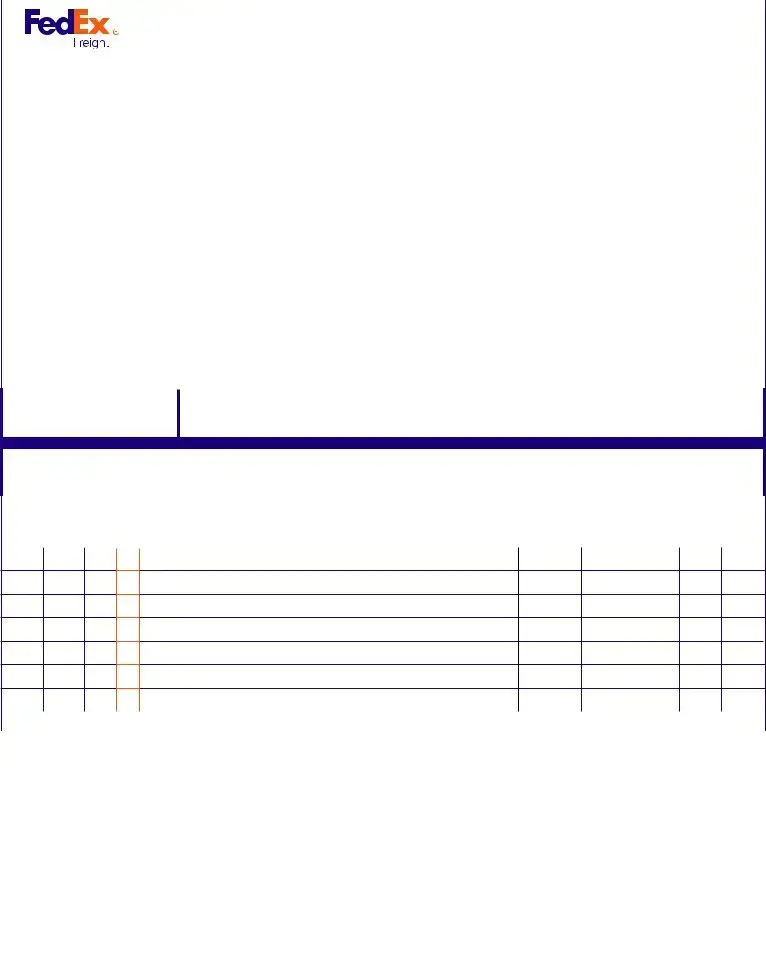Instructions on Utilizing Fedex Bill Of Lading
After thoroughly gathering the necessary information and understanding where to place it in the FedEx Bill of Lading form, you're ready to complete it accurately. This form is essential for shipping freight and requires specific details about the shipment. Follow these steps to ensure you're providing all necessary information and to avoid delays in shipping.
- Begin by entering the Date of shipment at the top of the form.
- Fill in the Purchase Order # and the Shipper # as required.
- Select a Service Type appropriate for your shipment; you may choose from options like FedEx Freight Priority or Economy.
- In the SHIPPER (from) section, include the ZIP code and phone numbers for the shipper's details. Specify the shipper’s contact name.
- For the CONSIGNEE (to), provide similarly required details, ensuring all information is accurate and complete.
- If needed, mark any Optional or Additional Service Fees and charges, such as Liftgate services or Limited Access services.
- Specify who will be billed for freight charges under BILL FREIGHT CHARGES TO, including their name and mailing details.
- If the freight charges are to be PREPAID or are marked as C.O.D., indicate accordingly. Include payment method specifics for C.O.D. if applicable.
- Provide REMIT C.O.D. TO information if it differs from the shipper's details.
- Detail the description of the goods being shipped in the Handling section, noting the kind of package and weight in pounds.
- If shipping hazardous materials, mark the respective columns and ensure to provide emergency contact information as required.
- Include the Shipper Certification and provide your signature and the date to attest to the accuracy and compliance of the shipment details.
- Finally, fill in any necessary Carrier Certification details if applicable, followed by the driver or employee number and trailer number for tracking purposes.

